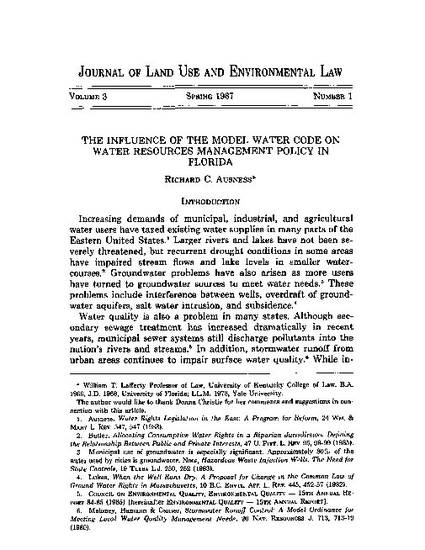
Increasing demands of municipal, industrial, and agricultural water users have taxed existing water supplies in many parts of the Eastern United States. Larger rivers and lakes have not been severely threatened, but recurrent drought conditions in some areas have impaired stream flows and lake levels in smaller watercourses. Groundwater problems have also arisen as more users have turned to groundwater sources to meet water needs. These problems include interference between wells, overdraft of ground- water aquifers, salt water intrusion, and subsidence. Water quality is also a problem in many states. The Florida Legislature has responded to these problems by enacting water resource management statutes. The cornerstone of this regulatory scheme is the Florida Water Resources Act of 1972. To a large extent, the 1972 Act is patterned after a legislative proposal known as the Model Water Code drafted at the University of Florida between 1967 and 1972. This article will examine the Code's underlying principles and consider the extent to which these principles are reflected in Florida's water management legislation.

Journal of Land Use & Environmental Law, Vol. 3, No. 1 (1987), pp. 1-32